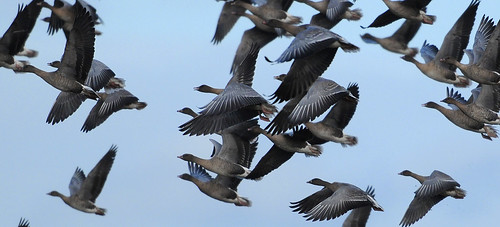Well on the face of it the title will sound just about as silly as it possibly could do, as we're currently surrounded by 'goodies' some of them 'Americans'. But I turned my nose up at 'em to give the rounds - Conder Green/Glasson Dock/Cockersands - a bit of a bashing to no avail....but no complaints.
Razorbill. Peter Guy.
I met PG at Glasson Dock this morning where I gave the Lune Estuary a pretty good grilling for almost two hours to find 2 adult Mediterranean Gulls, and noted c.250 Golden Plover as quite a reduction in number as of late, a remarkably small reeve Ruff, up to 40 Bar-tailed Godwit, and at least 6 Swallows south. Other waders here were rather unremarkable today. The juvenile Lesser Yellowlegs apparently showed at 2.00pm about two hours after I left....of course!
Conder Green has been pretty quiet of late and today was no exception, but Conder Pool has seen an increase with 8 Little Grebe seen today, with the 2 Wigeon summer residents. The circuit was worth the effort if only to find the Common Sandpiper in the creeks.
I gave Cockersands a pretty good shot from the lighthouse down to Bank End where you need to know - if you don't already - the sun glares into your face, the birds are all silhouettes, and just about the only ID you can achieve is that they vary in size. I saw 5 Wheatear along the length, and noted roosting on Plover Scar at high tide estimates of 650 Oystercatcher, 55 Ringed Plover, 40 Turnstone, 10 Dunlin, 4 Bar-tailed Godwit, and a solitary Grey Plover - an uncommon bird here - was off the car park at the lighthouse.
Not the most exciting days birding of my life, but you've just got to get out there....do it....and be rewarded by degrees whilst not dwelling too much on finding the likes of Siberian Rubythroats and Audouin's Gulls.
And finally....
The Fylde Coast. Peter Guy.
I'm always up for showcasing excellent photography - birds or not - and this is a dramatic one of the Fylde Coast at Blackpool, looks perfect for a sea-watching session to me. Thanks for the images PG much appreciated, and good to see you again today.
























